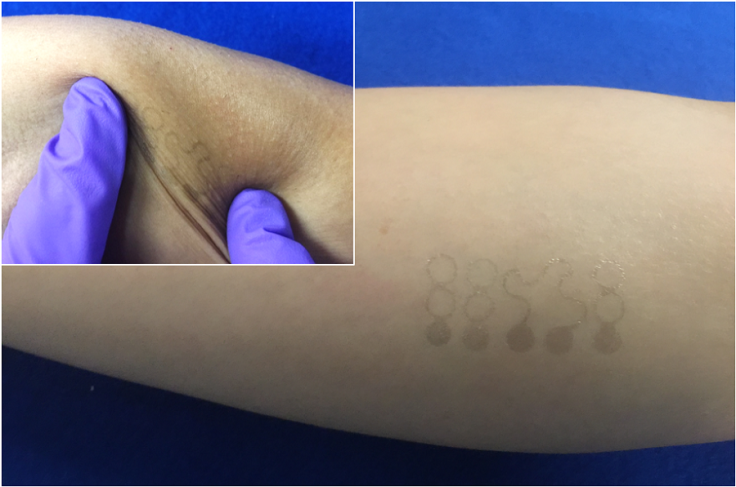This graphene-based electronic tattoo could monitor your heart rate, brain waves and more
Graphene Electronic Tattoo could one day replace bulky instruments used by doctors now.

Scientists at the University of Texas have developed a tattoo that can read and monitor various bodily statistics related to the heart and brain.
Researchers say that the ultra-thin Graphene Electronic Tattoo (GET) is stretchable and has an ultra low areal mass density that stays in contact with the skin and keep itself intact without any need for adhesives for several hours.
Placed under a liquid bandage, researchers say that it is possible for the GET to stay attached and active without fracture or delamination for multiple days.
GET is almost 85% transparent and is said to be 40% more stretchable than human skin. That means GETs can be directly laminated on to the skin, completely conforming to the microscopic morphology of the skin, says a report from the University, using only van der Waals force (the attraction of intermolecular forces between molecules) to stay put.
GETs are made of graphene, which according to a report by Motherboard, are 2D sheets that are 200 times stronger than steel while also being biodegradable, making it possible for users to wear it for long periods without any discomfort, says the report.
If it eventually makes it to mainstream markets, the report points out that GETs can replace the need for large, bulky instruments that doctors use now.
According to the report, GET has been able to successfully measure heart functions like EEG, ECG, and EMG, as well as a few brain functions and skin temperature and skin hydration, which are difficult to track and monitor constantly.
One of the researchers in the project, Shideh Ameri, in an interview with Motherboard, said: "The prominent differences of graphene electronic tattoos (GET) with recent tattoo-based sensors is that, since GET is ultrathin it forms conformal dry contact to skin and shows lower skin-electrode interface impedance and less motion artefact."
He added that since GET is nearly transparent, it can even be placed on prominent parts of the body like the face of the patient.
If GET gets mainstream, it could be a way to reduce costs when it comes to bodily monitors that are expensive and do not often go covered under medical insurance costs, pointed out the report.
The research team from Austin have plans of developing the GET into a wider medical system that includes a constant update of data from the patient into online medical records, which can then be studied by doctors as needed.
© Copyright IBTimes 2025. All rights reserved.





















